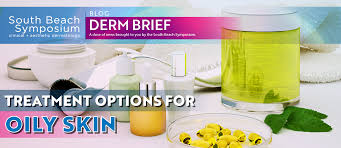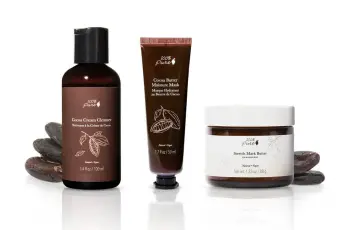
How to Reduce Sebum Production Internally: A Comprehensive Guide
Excess sebum production can leave your skin looking greasy, clogging your pores and contributing to breakouts, especially if you’re already prone to acne or naturally have oily skin.
Most skincare guides focus on topical solutions, but what if you could influence oiliness from within by making smart changes to your diet, supplements, hormones, or daily habits?
Understanding how internal factors affect sebum levels can help you create a more effective, long-lasting plan to control oil and support healthier skin overall.
This guide dives deep into the internal causes of oiliness and what you can do—backed by science—to regulate sebum naturally and safely over time.
Do You Really Have Oily Skin? Start With a Proper Diagnosis
Before trying to reduce sebum production, it’s essential to make sure your skin is actually oily and not just reacting to harsh products or dehydration.
Studies show that more than 80% of people overestimate their oil production, leading them to overuse drying or harsh treatments that worsen their skin.
Treating skin that isn’t truly oily with oil-stripping products can dehydrate your face, disrupt your skin barrier, and ironically trigger more oil as a defense mechanism.
The best way to confirm your skin type is to consult a dermatologist or take an evidence-based quiz like the Baumann Skin Type Indicator.
What Is Sebum and Why Does Your Skin Produce It?
Sebum is an oily, waxy substance produced by sebaceous glands in your skin that helps keep it lubricated, supple, and protected from environmental damage.
It plays a crucial role in maintaining your skin’s health, forming part of your natural moisture barrier and preventing water loss.
However, when your body produces too much sebum, it can mix with dead skin cells and dirt, leading to clogged pores, acne, and a shiny appearance.
Sebum production is influenced by genetics, hormones, diet, medications, and even certain supplements—making it a complex but manageable system.
Can Diet Affect Sebum Production from the Inside Out?
There’s a long-standing debate about whether what you eat can truly affect how oily your skin is, and the answer is yes—but with some caveats.
While diet won’t completely transform your oil levels overnight, it can have a modest impact on how much sebum your skin produces over time.
Let’s explore how specific dietary choices—like carbs, fats, and vitamins—can either encourage or reduce oiliness from within.
Low-Glycemic Diets: Not the Oil-Reducing Hero We Thought
Low-glycemic diets are often praised for improving acne, but their impact on oiliness is surprisingly complicated and even counterproductive for some.
In one 12-week study, participants on a low-glycemic diet experienced an increase in monounsaturated fats, which may actually increase sebum secretion.
These changes can be beneficial for dry skin types but may worsen greasiness in people with already oily skin.
So, while low-glycemic diets might calm breakouts, they’re not ideal if your primary concern is reducing oil levels.
Fat Types Matter: Saturated vs. Unsaturated Fats and Sebum
A 2008 study suggested that increasing saturated fats in the diet could slightly reduce sebum output—but the results haven’t been consistently replicated.
At the same time, high saturated fat intake carries health risks like increased LDL cholesterol and a greater chance of heart disease.
Instead of eating more saturated fat, a better alternative is using moisturizers rich in saturated fatty acids for localized hydration—if your skin can handle them.
Vitamin A from Food: Helpful but Not a Standalone Solution
Vitamin A is known for regulating sebum, especially in pharmaceutical forms like isotretinoin, but what about the vitamin A found in everyday foods?
One study found that a 4.8% increase in blood Vitamin A levels from diet only reduced sebum by 1.4%, which is a modest but measurable effect.
This means dietary Vitamin A can support oil balance but likely won’t be powerful enough on its own to treat severely oily skin.
Good sources of Vitamin A include carrots, spinach, kale, broccoli, liver, eggs, cantaloupe, mangoes, and fortified dairy products.
The Takeaway: Food Can Help, But Don’t Expect Miracles
Eating for skin health is always a good idea, but don’t rely solely on diet to tackle severe oiliness—especially if your sebaceous glands are hormone-driven.
Focus on nutrient-dense, whole foods that support your skin and avoid excess sugar and refined carbs, which can trigger inflammation and breakouts.
Supplements for Sebum Control: What Works and What Doesn’t?
Some vitamins and minerals show potential in managing oil levels, though not all are backed by strong evidence, and some carry risks.
Vitamin A supplements, in particular, can be effective—but only under medical supervision due to their potential for toxicity and serious side effects.
Vitamin A is fat-soluble and can build up in your system, leading to problems like liver damage, hair loss, dry skin, and even birth defects in pregnant women.
The recommended daily allowance (RDA) is 2,700 IUs/day for women, and you should never exceed 10,000 IUs/day without professional oversight.
Other Supplements: Zinc, Omega-3s, and Green Tea Extract
Zinc and omega-3 fatty acids are often recommended for acne, but studies show they don’t directly reduce sebum production—though they may help reduce inflammation.
Green tea extract, on the other hand, shows more promise thanks to its polyphenol content, which can help regulate sebum when used topically or consumed regularly.
If you’re interested in supplements, prioritize green tea extract over unproven options, and always talk to your doctor before starting any new regimen.
Prescription Medications That Control Oil Internally
If you’ve tried adjusting your diet and supplements without success, it may be time to consider medical options that directly target sebum production.
Retinoids, particularly isotretinoin (Accutane), are some of the most effective tools for significantly reducing oil by shrinking sebaceous glands.
These medications can produce dramatic improvements but require close monitoring due to risks like liver issues, birth defects, and mental health side effects.
Hormonal treatments are another powerful option, especially for women experiencing oiliness linked to hormonal imbalances or PCOS.
Spironolactone and Finasteride: Hormonal Solutions to Sebum Control
Spironolactone is commonly prescribed for women with hormonal acne or PCOS and works by blocking androgen receptors and reducing oil production.
Finasteride (Propecia), primarily used for male hair loss, blocks the conversion of testosterone to DHT and may have secondary benefits for oily skin.
Both drugs should only be taken under medical supervision and are not appropriate for everyone, especially if you’re pregnant or planning to conceive.
How Hormones and Lifestyle Habits Affect Sebum
Hormones like testosterone play a central role in oil production, which is why teenagers often experience oily skin and acne during puberty.
Activities that raise testosterone—such as intense physical training, anabolic supplements, or stress—can also elevate sebum levels over time.
Conditions like PCOS can throw off hormonal balance, resulting in increased oiliness and breakouts, especially along the jawline and chin.
If your oiliness appeared after starting a new supplement or workout regimen, consider speaking to a healthcare provider about potential hormonal links.
Stress: A Silent Aggravator of Skin Problems
Stress may not directly increase sebum, but it can weaken your skin barrier and trigger breakouts by raising cortisol, which contributes to inflammation and sensitivity.
Managing stress through mindfulness, exercise, or therapy can improve your overall skin health—even if it doesn’t eliminate oil production outright.
Fragrance and Sebum: An Unclear Relationship
A 2008 study hinted that certain fragrances might stimulate sebum production, but the research was inconclusive and hasn’t been widely repeated.
To be safe, it’s best to avoid overly fragranced skincare products if you’re concerned about oiliness or skin sensitivity.
Green Tea: A Dual-Action Ingredient for Oily Skin
Green tea, when applied topically, has been shown to reduce sebum by targeting oil glands directly, thanks to compounds like EGCG.
Drinking green tea daily may offer some mild benefits, but applying it in serums, toners, or moisturizers provides a stronger, more direct effect.
The Ideal Skincare Routine to Support Internal Changes
Managing oil from the inside is only half the battle—your external routine also needs to support your skin type and avoid triggering more sebum.
Use gentle, oil-free cleansers, lightweight moisturizers, and non-comedogenic sunscreens that hydrate without clogging pores.
Topical retinoids like adapalene or tretinoin can further reduce oil by encouraging faster cell turnover and regulating your skin’s oil glands.
Consider using products with niacinamide, zinc, or green tea extract to keep oil levels in check while calming inflammation and redness.
Top Picks for Oily Skin Management
Essopi Antioxidant Cream: Contains green tea and monounsaturated fatty acids, ideal for combo-to-oily skin types.
Oil-free Gel Moisturizers: Hydrate without leaving residue or clogging pores.
Tretinoin or Adapalene: Powerful retinoids that reduce oil and help treat acne.
Conclusion: A Multi-Pronged Strategy Works Best
There’s no magic pill to eliminate oil overnight, but internal and external approaches combined can help you control sebum naturally and sustainably.
Dietary changes offer modest improvements, while prescription medications and hormonal therapies deliver stronger, targeted results.
Support your internal efforts with a smart, consistent skincare routine that respects your skin barrier and uses proven ingredients.
Key Takeaways to Reduce Sebum Production Internally
Diet can help, but avoid sugar and focus on Vitamin A-rich foods.
Oral and topical retinoids are highly effective for reducing oil.
Hormonal treatments like spironolactone or finasteride may be beneficial under medical supervision.
Green tea is an excellent ingredient for oily skin—topical use is most effective.
Combine internal changes with an appropriate skincare routine for long-term success.


